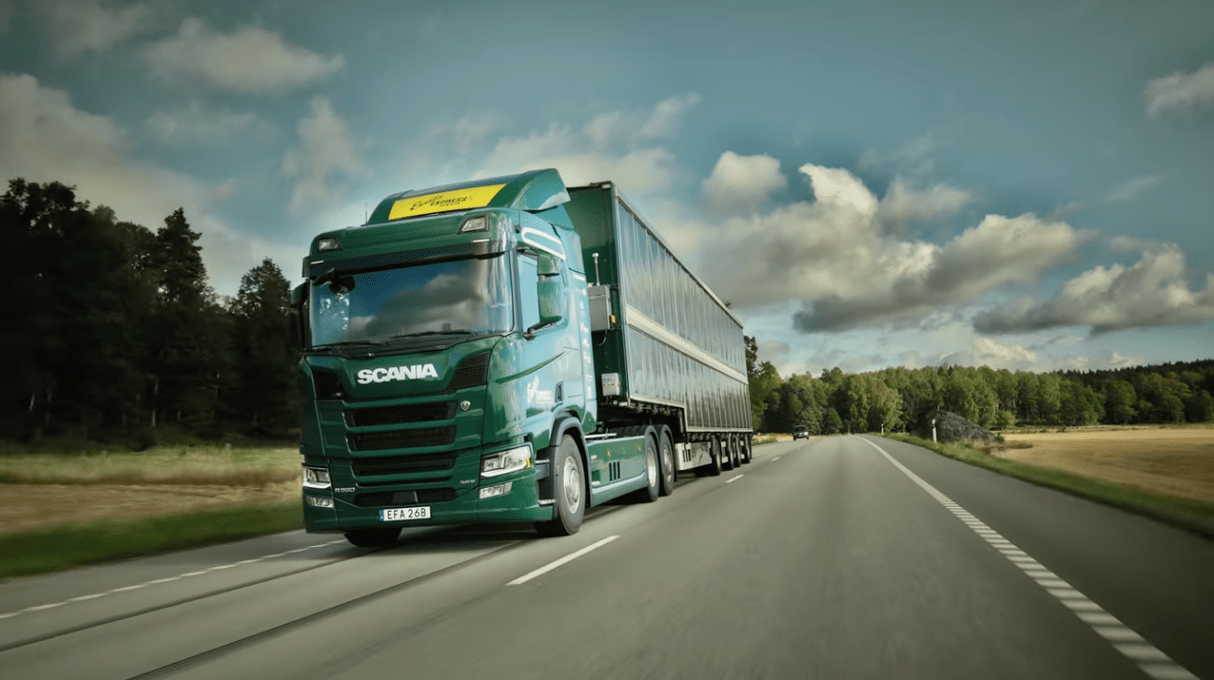

Europe’s seven largest commercial truck manufacturers agreed in 2020 to cease producing diesel vehicles within two decades’ time, and have been aggressively working towards meeting that goal ever since. On August 31, one of those companies announced its latest potential tool in the emissions-heavy industry’s transition towards a more sustainable future. Instead of revolutionizing what’s underneath a semi-truck’s hood, however, Sweden’s Scania aims to take advantage of all the free real estate surrounding the tons of cargo in transit on roadways.
Per a release from Scania, the company recently partnered with Uppsala University and the energy company Midsummer to develop a 560-horsepower plug-in hybrid semi-truck prototype whose 60-foot-long trailer is wrapped in 100 square meters of solar panels. According to CleanTechnica, the additional solar powered boost could supply the truck with an additional annual driving range of up to 5,000 kilometers in Sweden—a promising figure, given the prototype’s location.
The Scandinavian nation isn’t exactly known for its endless days of sunshine. July in Stockholm, for example, only experiences clear skies a little over half the month on average—and that’s the highest rate for the entire year. November, by contrast, is cloudy nearly 75 percent of the month. But in this case, the overcast skies’ regularity works to the project’s advantage.
[Related: Does Hyundai’s rooftop solar panel change the fuel-economy equation?]
“We specifically wanted to see if it made sense in Sweden, because if you go to places such as Southern Europe, Australia or North Africa, there’s obviously a lot more sunshine,” explained Eric Falkgrim, a Technology Leader at Scania’s Research and Innovation department and the solar-powered truck’s project manager, in the August 31 announcement. “If it can work here in the less sunny and somewhat darker conditions then that would confirm the widespread validity of the project.”
Falkgrim noted that although the concept of slapping solar panels atop a semi-truck trailer may initially seem relatively simple, the logistics were anything but easy. “It’s a little bit of a wild and crazy idea because it comes with a lot of new hardware and software systemization and development, to make it safe to handle the transfer of power, and to handle [design] faults,” he continued.
Generally speaking, solar panels aren’t optimized for near-constant traveling. As such, it’s “fairly involved from a technical point of view,” said Falkgrim. Despite only recently starting prototype testing on Sweden’s public roads, he explained the project is “about seeing if the solution makes sense, and so far we believe it does.” Although such a design isn’t expected to become widespread on roadways for a few years, Scania’s initial testing shows the tech is not only feasible, but promising.
